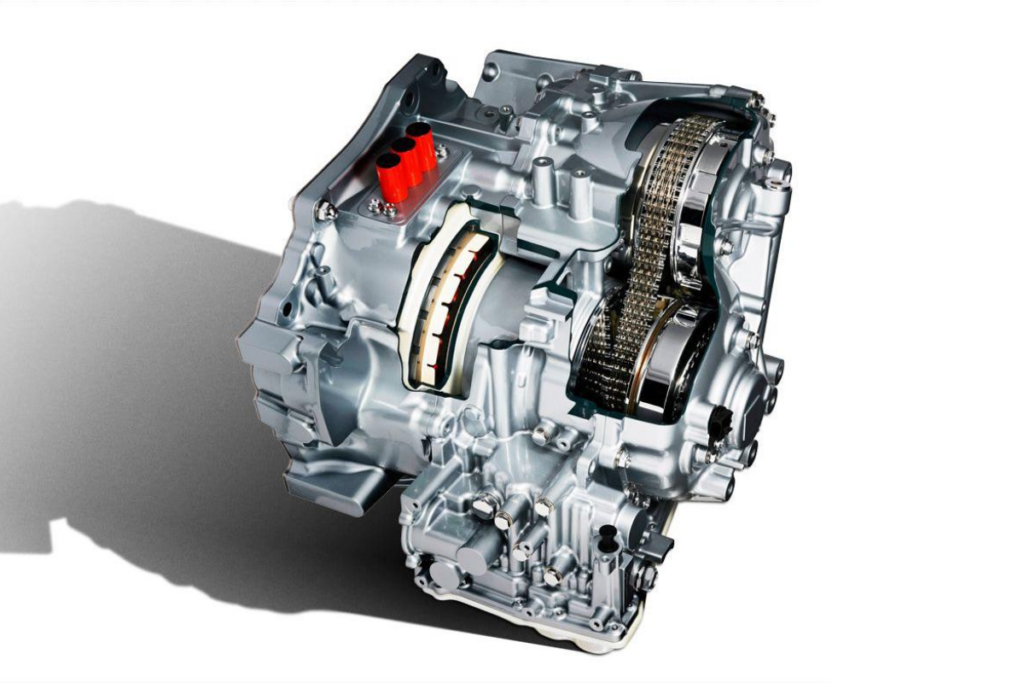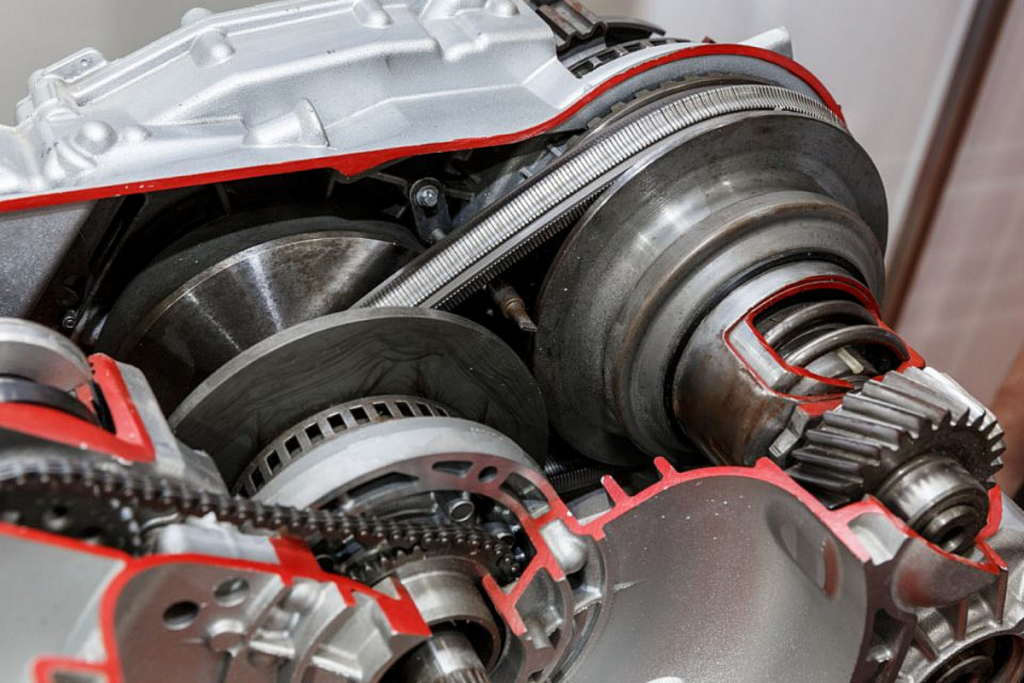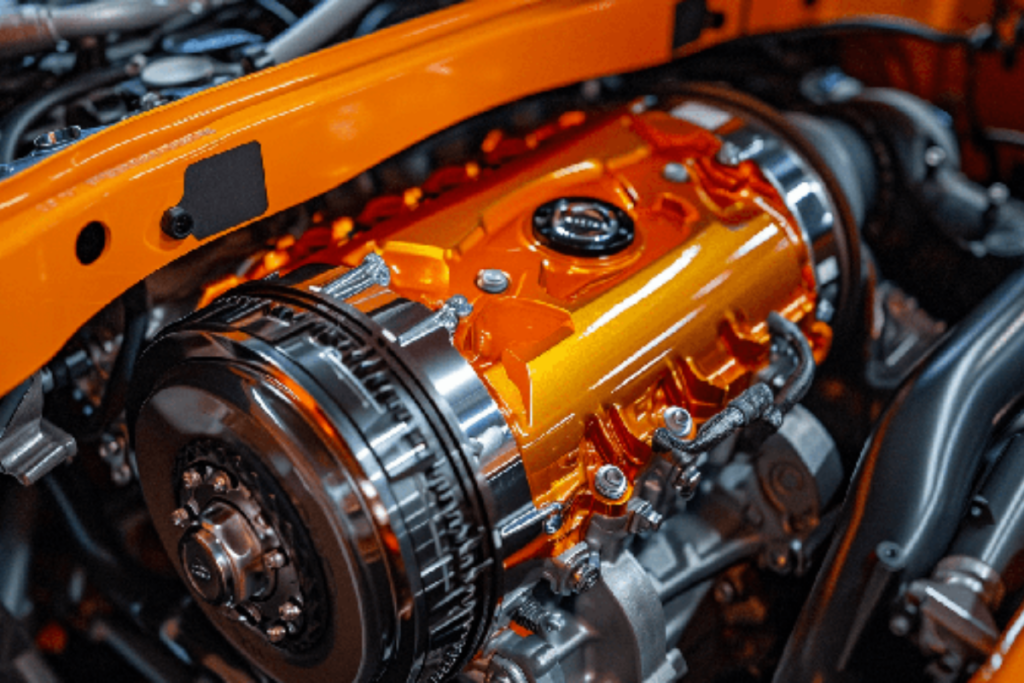📖 Table of Content:
Continuously Variable Transmissions (CVTs) have become increasingly popular in modern vehicles due to their ability to provide seamless acceleration and improved fuel efficiency. However, despite their benefits, CVTs are not without their issues. Understanding these problems is crucial for maintaining the longevity and performance of your vehicle. In this guide, we’ll delve into the common problems associated with CVT transmission problems, their causes, symptoms, and solutions.
What is a CVT Transmission?
Definition and Function
A Continuously Variable Transmission (CVT) is a type of automatic transmission that can change seamlessly through a continuous range of gear ratios. Unlike traditional transmissions, which have a fixed number of gears, a CVT adjusts to the most efficient engine speed for the vehicle’s driving conditions, providing a smoother driving experience and improved fuel efficiency.
Comparison with Traditional Automatic and Manual Transmissions
Automatic Transmission:
- Fixed Gears: Traditional automatic transmissions have a set number of gears (e.g., 6-speed, 8-speed).
- Shifting: They shift between these gears based on speed and load.
- Pros and Cons: Generally smooth operation but can have noticeable shifting.
Manual Transmission:
- Driver Control: Requires the driver to manually shift gears using a clutch pedal and gear stick.
- Fixed Gears: Has a fixed number of gears.
- Pros and Cons: Offers more control and engagement but requires skill and effort to operate.
CVT Transmission:
- Variable Ratios: No fixed gears; adjusts continuously to optimal engine speed.
- Smoother Ride: Provides a seamless driving experience with no noticeable shifting.
- Efficiency: Often more fuel-efficient due to constant adjustment to optimal power settings.
The primary advantage of a CVT is its ability to keep the engine in its most efficient operating range, which can enhance fuel economy and provide a smoother driving experience. However, it can also present unique challenges and potential problems, which we will explore in the following sections.
Table of Contents
Common Problems with CVT Transmissions
Overheating Issues
Causes of Overheating CVT transmissions can overheat due to several factors, including heavy loads, prolonged driving, and inadequate cooling systems. Insufficient CVT fluid or using the wrong type of fluid can also contribute to overheating.
Signs and Symptoms Common signs of overheating include a burning smell, dashboard warning lights, reduced performance, and unusual noises from the transmission.
Prevention and Solutions To prevent overheating, ensure regular maintenance of the cooling system and use the correct CVT fluid. Avoid driving under heavy loads for extended periods and consider installing an auxiliary transmission cooler if necessary.
Premature Wear and Tear
Belt and Pulley Wear The belts and pulleys in CVT transmissions are subject to wear and tear over time. Frequent stop-and-go driving and heavy acceleration can accelerate this wear.
Contributing Factors Poor maintenance, harsh driving conditions, and using incorrect or low-quality fluids can contribute to premature wear.
Maintenance Tips to Extend Lifespan Regularly inspect and replace the CVT fluid according to the manufacturer’s recommendations. Avoid aggressive driving and ensure timely servicing to detect and address wear early.
Fluid-Related Issues
Importance of Using the Correct CVT Fluid Using the wrong type of CVT fluid can lead to poor performance and damage to the transmission. Always use the fluid specified by the vehicle manufacturer.
Symptoms of Low or Degraded Fluid Symptoms include shuddering, slipping, delayed engagement, and unusual noises. These indicate that the fluid may be low or degraded.
Fluid Change Intervals and Procedures Follow the manufacturer’s guidelines for fluid change intervals. Typically, CVT fluid should be changed every 30,000 to 50,000 miles. Always follow proper procedures for draining and refilling the fluid.
Acceleration Lag and Noise
Causes of Lag in Acceleration Lag in acceleration can be caused by worn belts, low fluid levels, or issues with the CVT control module.
Common Noises and Their Meanings Common noises include whining, grinding, or rattling. These noises can indicate worn components or fluid issues.
Diagnosis and Fixes Diagnose acceleration lag and noise issues with a professional diagnostic tool. Fixes may include fluid replacement, belt adjustment, or component repair.
Electronic Control Problems
Issues with CVT Control Modules Electronic control problems can arise from faulty sensors, software issues, or wiring problems. These issues can affect the performance and reliability of the CVT.
Symptoms of Electronic Failures Symptoms include erratic shifting, warning lights on the dashboard, and reduced fuel efficiency.
Repair and Replacement Options Diagnose electronic issues using specialized diagnostic equipment. Repairs may involve updating the software, replacing sensors, or repairing wiring. In some cases, the control module itself may need replacement.
How to Diagnose CVT Transmission Problems
Common Diagnostic Tools and Methods
Diagnosing CVT transmission problems requires specific tools and methods to identify issues accurately. Some of the common diagnostic tools include:
- OBD-II Scanner: This tool reads error codes from the vehicle’s onboard computer, indicating specific issues with the CVT transmission.
- Transmission Fluid Tester: Used to check the quality and level of CVT fluid, as degraded fluid can lead to transmission problems.
- Pressure Gauge: Measures the hydraulic pressure within the transmission, helping to identify leaks or pressure issues.
- Multimeter: Tests electrical components and sensors related to the CVT system.
DIY vs. Professional Diagnosis
While some basic diagnostic tasks can be performed by vehicle owners, such as checking the transmission fluid level and condition, many CVT issues require professional diagnosis. Here are some considerations:
- DIY Diagnosis:
- Suitable for basic checks like fluid level and color.
- Using an OBD-II scanner to read error codes.
- Inspecting for visible signs of wear or damage.
- Professional Diagnosis:
- Necessary for complex issues requiring specialized tools and expertise.
- Professionals can interpret error codes accurately and perform in-depth diagnostics.
- Ensures precise identification of problems and prevents potential misdiagnosis.
Importance of Early Detection
Early detection of CVT transmission problems is crucial for several reasons:
- Prevents Further Damage: Identifying issues early can prevent minor problems from escalating into major, costly repairs.
- Maintains Vehicle Performance: Ensuring the CVT transmission is functioning properly keeps the vehicle running smoothly and efficiently.
- Safety: Addressing transmission problems promptly can prevent potential safety hazards on the road.
- Cost Savings: Early repairs are often less expensive than fixing severe damage caused by neglecting initial symptoms.
Maintenance Tips for CVT Transmissions
Regular Inspection and Servicing
Regular inspections can help detect potential issues before they become major problems. It’s essential to follow the maintenance schedule outlined in your vehicle’s manual, which typically includes periodic checks and servicing by a professional mechanic.
Fluid Maintenance
Using the correct CVT fluid is crucial for optimal performance. Regularly check the fluid level and quality, and follow the manufacturer’s recommendations for fluid changes. Dirty or low fluid can lead to overheating and premature wear.
Driving Habits that Preserve CVT Health
Adopting smooth and gentle driving habits can significantly extend the life of your CVT. Avoid sudden acceleration and heavy towing, as these can put excessive strain on the transmission. Additionally, try to keep the vehicle at a steady speed to reduce the workload on the CVT.
When to Seek Professional Help
Signs That Indicate Serious Problems
Recognizing the signs of serious CVT transmission issues early can save you from costly repairs and dangerous driving conditions. Here are some key indicators that it’s time to seek professional assistance:
- Unusual Noises: Grinding, whining, or clunking noises when accelerating or decelerating.
- Slipping Gears: Sudden loss of acceleration or failure to maintain speed.
- Fluid Leaks: Puddles of transmission fluid under your vehicle.
- Warning Lights: Transmission or check engine lights on your dashboard.
- Shuddering: Vibration or shaking when driving, particularly during acceleration.
Choosing the Right Mechanic or Service Center
Finding a trustworthy mechanic or service center is essential for addressing CVT transmission problems effectively. Consider the following tips when choosing a service provider:
- Specialization: Look for mechanics who specialize in CVT transmissions or have extensive experience with your vehicle make and model.
- Certifications: Verify that the service center and mechanics have the necessary certifications, such as ASE (Automotive Service Excellence).
- Reputation: Read reviews and ask for recommendations from friends or online forums.
- Warranty: Ensure the service center offers a warranty on parts and labor for the repairs performed.
- Transparency: Choose a mechanic who provides clear explanations and detailed estimates before beginning any work.
Cost Considerations
Understanding the potential costs associated with CVT transmission repairs can help you prepare financially and avoid unexpected expenses. Here are some factors that influence repair costs:
- Severity of the Issue: Minor repairs, such as fluid changes or sensor replacements, will cost less than major repairs like a complete transmission rebuild or replacement.
- Labor Rates: Labor costs can vary significantly depending on the service center’s location and expertise.
- Parts Availability: The cost and availability of replacement parts can affect the overall repair bill.
- Diagnostic Fees: Some mechanics charge a fee for diagnosing the issue, which can add to the total cost.
- Warranty Coverage: If your vehicle is still under warranty, some or all of the repair costs may be covered.
When faced with CVT transmission problems, seeking professional help promptly and choosing a reputable service center can ensure your vehicle is repaired correctly and safely. Proper maintenance and timely repairs can extend the life of your CVT transmission and keep your vehicle running smoothly.
Pros and Cons of CVT Transmissions
Advantages of CVTs
- Seamless Acceleration
- CVTs provide smooth and continuous acceleration without the noticeable gear shifts of traditional transmissions. This results in a more comfortable driving experience, especially in stop-and-go traffic.
- Improved Fuel Efficiency
- By continuously adjusting the gear ratio, CVTs keep the engine operating at its optimal efficiency, which often leads to better fuel economy compared to traditional automatic transmissions.
- Reduced Engine Strain
- CVTs can adapt to different driving conditions without the need for frequent gear changes, reducing engine strain and potentially extending the lifespan of the engine.
- Enhanced Performance in Specific Conditions
- CVTs offer improved performance in scenarios requiring constant speed, such as highway driving, by maintaining a steady engine speed and optimizing fuel consumption.
Potential Drawbacks
- Overheating Risks
- CVTs can be prone to overheating, especially in heavy traffic or when towing. This can lead to performance issues and potential damage if not properly managed.
- Higher Repair Costs
- Repairs for CVTs can be more expensive compared to traditional transmissions, partly due to their complex design and the specialized knowledge required for repair.
- Acceleration Lag and Noise
- Some drivers report a noticeable lag in acceleration and unusual noises from CVTs, which can affect the overall driving experience and performance.
- Long-Term Durability Concerns
- While CVTs are designed for efficiency, their long-term durability can be a concern, especially if not maintained properly. Components like belts and pulleys may wear out faster than traditional transmission parts.
Is a CVT Right for You?
Deciding whether a CVT is right for you depends on your driving needs and preferences. If you prioritize smooth acceleration and fuel efficiency, a CVT might be a good fit. However, if you have concerns about long-term durability and repair costs, or if you prefer a more traditional driving experience, you might want to consider other transmission options.
Evaluate your driving habits, maintenance capability, and the specific performance attributes you value to make an informed decision about whether a CVT is suitable for your vehicle.
FAQs About CVT Transmission Problems
1. What is a CVT transmission?
- A CVT (Continuously Variable Transmission) is a type of automatic transmission that provides an infinite range of gear ratios, allowing for smoother acceleration and better fuel efficiency compared to traditional automatic transmissions.
2. What are the common problems with CVT transmissions?
- Common issues include overheating, premature wear and tear, fluid-related problems, acceleration lag, unusual noises, and electronic control failures.
3. How can I tell if my CVT transmission is overheating?
- Signs of overheating include slipping, rough shifting, warning lights on the dashboard, and a noticeable decrease in performance.
4. What should I do if my CVT transmission fluid is low or degraded?
- Check your vehicle’s manual for the correct fluid type and replacement intervals. If you notice low fluid levels or degraded fluid, schedule a fluid change as soon as possible.
5. How often should I change the CVT transmission fluid?
- It is generally recommended to change CVT fluid every 30,000 to 60,000 miles, but you should always refer to your vehicle’s owner manual for specific recommendations.
6. What are the signs of a failing CVT control module?
- Symptoms of a failing control module include erratic shifting, transmission slippage, warning lights, and poor acceleration.
7. Can I repair a CVT transmission myself?
- While minor issues like fluid changes can be done yourself, complex problems should be handled by a professional mechanic to avoid further damage.
8. How much does it cost to repair a CVT transmission?
- Repair costs can vary widely depending on the severity of the issue and your vehicle model. Minor repairs might cost a few hundred dollars, while major repairs or replacements can exceed $3,000.
9. Are CVT transmissions more prone to problems than traditional transmissions?
- CVTs can have specific issues related to their design, but with proper maintenance, they can be as reliable as traditional transmissions. The key is regular servicing and prompt attention to any issues.
10. What are the advantages of a CVT transmission?
CVTs offer smoother acceleration, better fuel efficiency, and a more responsive driving experience compared to traditional automatic transmissions.
Conclusion
In summary, CVT transmissions offer smooth acceleration and enhanced fuel efficiency, but they come with their own set of challenges. Key issues include overheating, premature wear, fluid-related problems, acceleration lag, and electronic control failures. Proper maintenance and timely diagnosis are essential to avoid costly repairs and ensure the longevity of your CVT transmission.
For CVT owners, it’s crucial to adhere to regular maintenance schedules, use the correct transmission fluid, and monitor your vehicle for any signs of trouble. Early detection of problems can save you from significant repairs and extend the life of your transmission. If you experience any unusual symptoms or are unsure about the condition of your CVT, seek professional help promptly.




